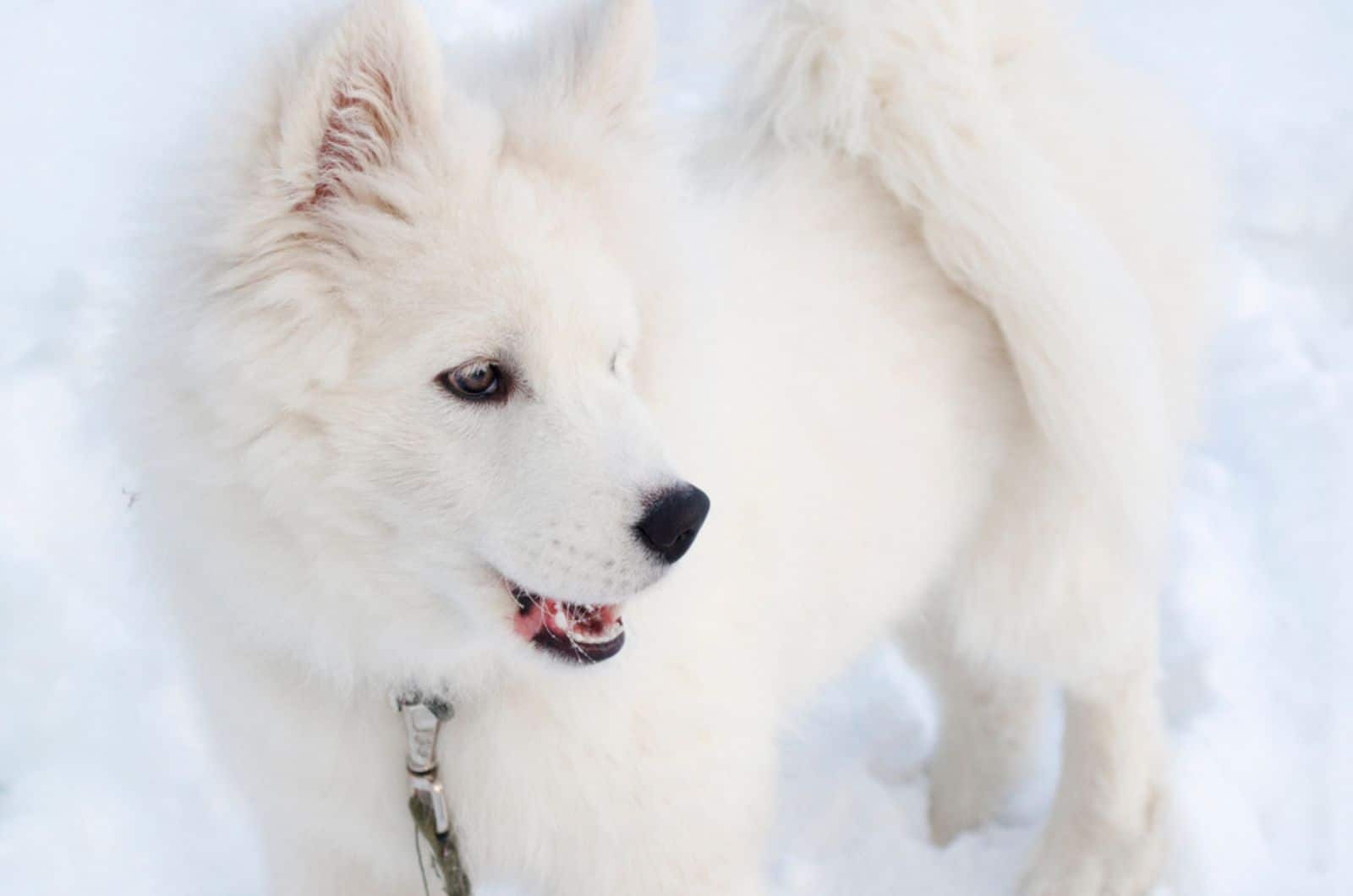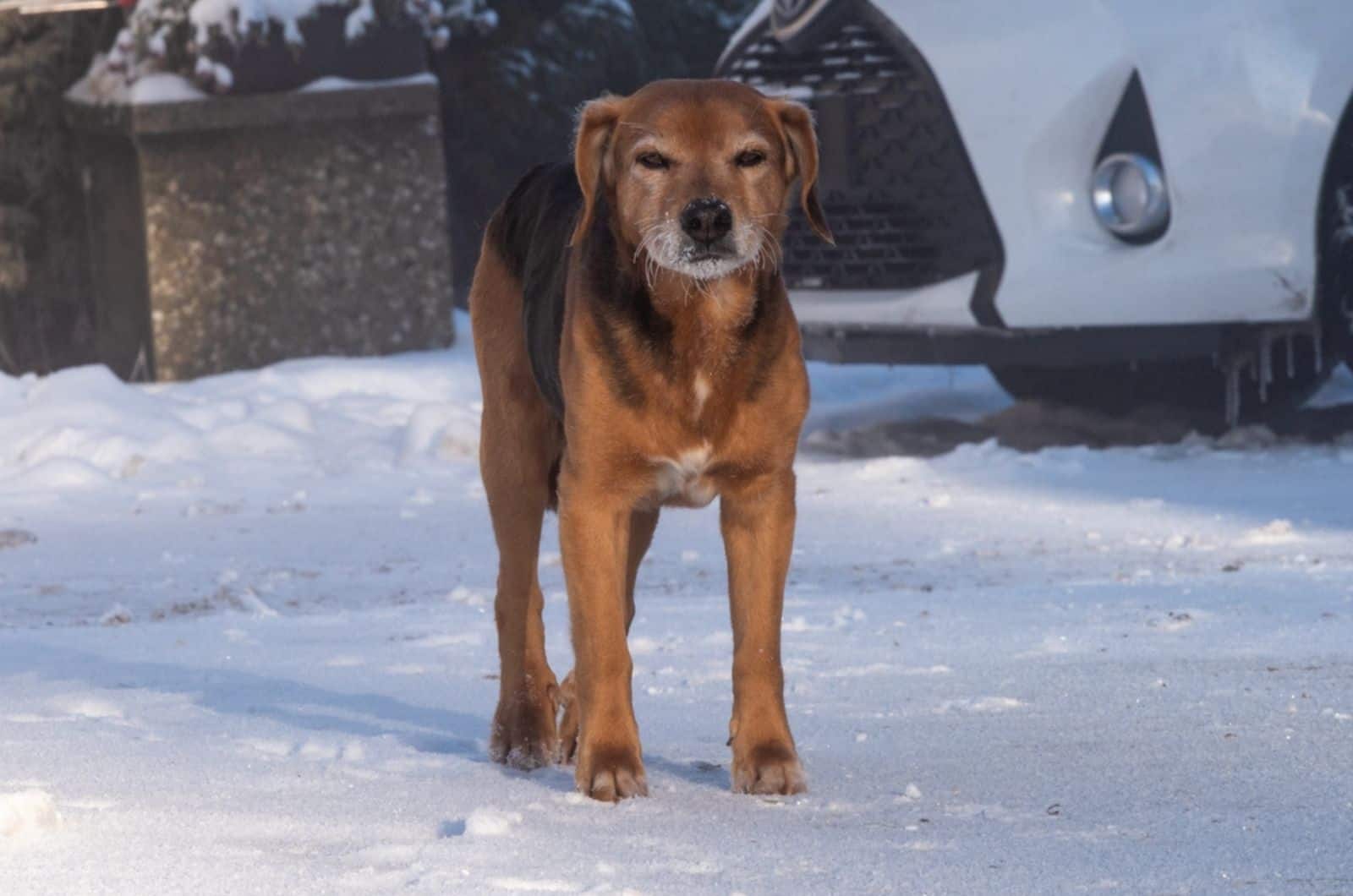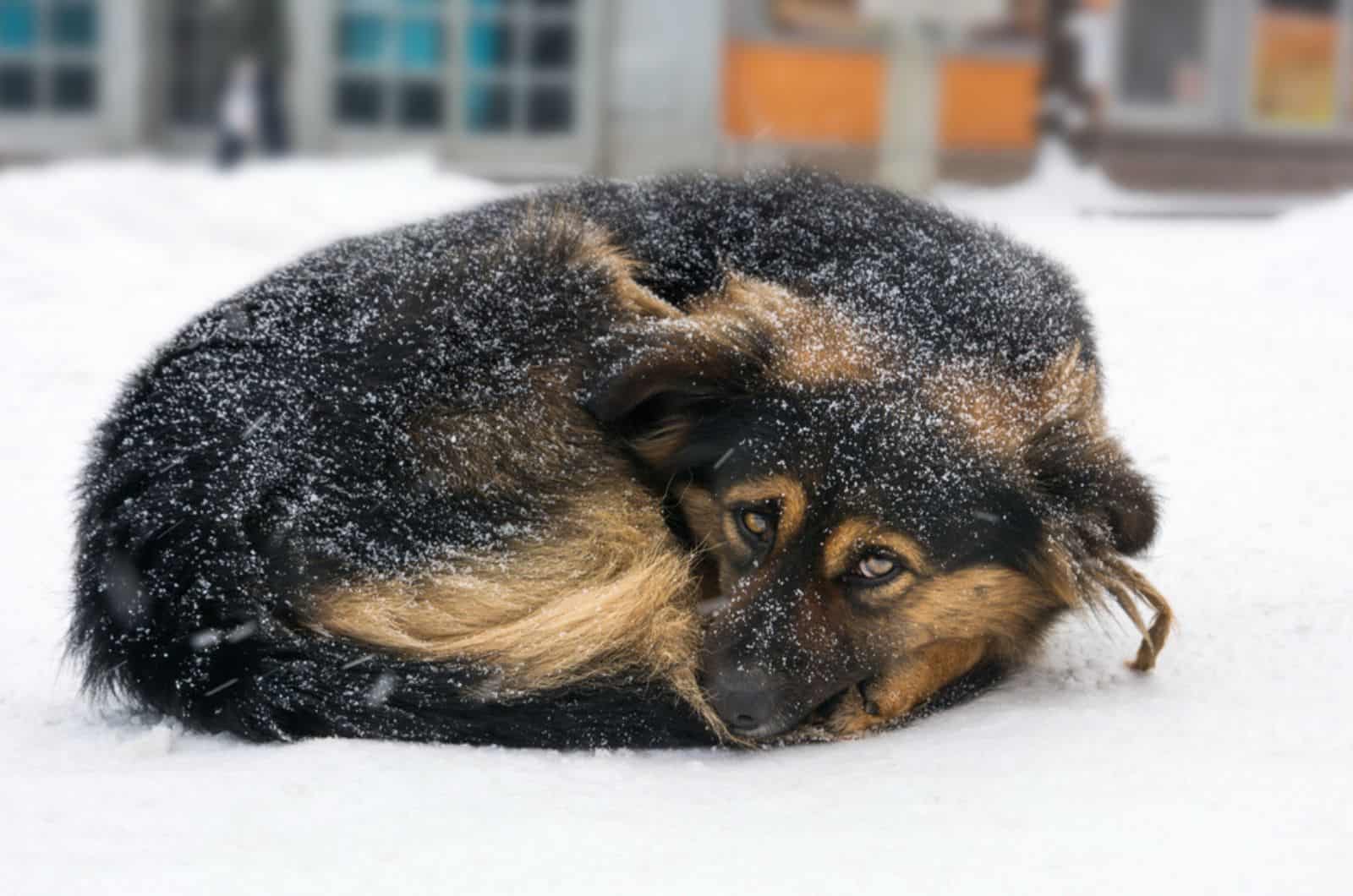We all know that dogs can withstand pretty harsh conditions, but temperature is often the one that gets the most attention, particularly lower temps with dogs that don’t have fur.
But, what would be considered a dangerously low temperature for any canine companion?
The usual suspect ends up being around 45F for all dogs as that’s when coatless small breeds start feeling the impact of cold weather.
Going down a bit lower to 32F is where most small breeds regardless of coat size and sickly or immunocompromised canines will start to suffer the frigid effects.
Finally, 20F seems to be the point where every dog, regardless of size or coat length, will start showing signs of cold exposure.
However, temperature isn’t the only factor that plays a part in this whole equation, so let’s find out what these other factors are then, shall we?
The 8 Other Factors That Affect Dog Cold Sensitivity
These factors can be separated into two different categories: ones that are environmental, and ones that are from the dog’s own body structure.
Both of them can be manipulated to a degree, though the ones pertaining to the body a bit less so than others.
The Environmental Effects

First on the list are the environmental effects as they’re usually the ones most at play here and they are as follows:
1. Humidity
One of the main factors in temperature feel is the air humidity. If the air is dry, the temperature outside feels a lot colder than it really is and vice versa.
When this pairs with some of the other factors on this list, it can feel particularly chilly outside which can skew the previously listed temperatures heavily.
2. The Presence Of Wind And Wind Speed
The second factor is wind itself, one that pairs itself extremely well with humidity and amplifies that cold or hot feel greatly.
If a strong, cold wind is blowing with dry air in your surroundings, chances are your pooch will be freezing his paws off at higher temperatures too.
3. Sunlight Presence
Maybe one of the less important factors on the list, but still worth mentioning is the presence of sunlight.
If it’s cloudy outside with the same temperature as it’d be when it’s sunny, it’ll feel colder than it actually is because our dogs can’t get the comfy feeling of the sun’s rays on their bodies.
Canine Specific Factors

Dog specific factors are just as, if not more, influential than the environmental factors and these are the most important ones.
1. A Dog’s Size
One of the more relevant factors is the dog’s size itself. While larger dogs have more surface area to lose heat from, the overall volume is bigger too.
This then makes the heat loss lower than that of smaller dogs who have a much smaller “heat tank” to draw from, so to speak which is why they get colder faster.
2. Coat Type
Dogs with no coats are more prone to the cold than those with actual coats, and that line shifts the longer the hair.
However, dogs with double layered coats are arguably the most insulated from heat loss and the cold in general as they retain said heat a lot more efficiently.
This is more common on dog breeds who are used in colder climates, be it shepherd dogs, Huskies and the like.
3. How Much He Weighs
Weight is another helpful factor as body fat is used by loads of animals to keep themselves warm over the winter. A perfect example would be the bear and his famous winter hibernation cycle.
Dogs aren’t all too different, and neither were humans as both would usually put on a few pounds from heartier meals to keep themselves warmer in the winter months.
Obviously, it’s important to not go too overboard because you may be introducing different health risks into the equation.
4. A Dog’s Age
As dogs get older, they’re more susceptible to the cold. It’s the same with us as the more health problems we rack up, the more we’ll feel the “chill in our bones”.
Dog’s are no different, so expect a dog to be more cold averse the older he gets.
5. His Activity Level
Finally, depending on how active the dog is in the cold temps dictates how cold he feels.
More active dogs will be producing more heat from their bodies which can keep them going for longer than those who are just taking a relaxing stroll.
How Can I Tell What Temperature Is Too Cold For My Dog?

It’s fairly easy, just look for the same signs you’d be expecting from a human who’s dealing with a bit too much ice.
Look for signs like:
- Excessive shivering
- Heart rate jumps
- Lethargic responses and general lack of energy
- Pale skin
- Rapid breathing
- Tucked tail and a hunched over posture
- Clear reluctance to proceed further into the cold
- Whining from frostbite and attempts to get off the cold ground
In more extreme cases, prolonged exposure can lead to hypothermia and potential permanent, if not fatal damage to the pooch.
So, if you see him exhibiting such signs, get him somewhere warm as quickly as you can.
In Conclusion
There’s no set temperature that’s considered to be too cold for your dog, or as a threshold where it swaps from tolerable to cold as it depends on a variety of factors.
The agreed upon estimate is often considered to be somewhere around 45F before it starts getting dicey.
However, don’t rely on a numerical value, but rather your dog’s reaction to the cold.
If he’s shivering or whining from being outside, then it’s best to get him somewhere warm.
If he’s showing any of the more serious signs of hypothermia or cold exposure in general, get him to a vet as soon as you can to help treat him in case of potential damage.
Whatever the case may be, I’m sure that your common sense will easily be able to determine when your pooch is too cold and that you’ll keep him inside during the chilly months.
Until next time, pet parents.
